Picture Post: Road Trip Down Memory Lane, Pt. 2: Münster
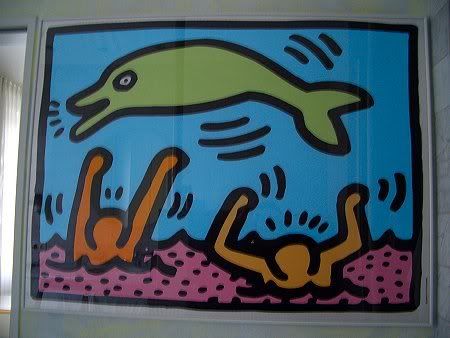
This is the Haring on the loo, at that amazing hotel we stayed at in Münster.
We spent the day travelling from Gevelsberg to Münster, which is not very far at all, but visited the town and the village where my mother had her first teaching jobs after finishing teaching college in Münster. I didn't take any pictures there; it was her gig and didn't mean much to me. In the town, my mother's sense of direction was totally thrown out of whack by the fact that it had sprouted an entire new half since her time, and she didn't find her old school at first, and the places where she had lived. As I have inherited that sense of direction and map-hound-dom from her, I can just about imagine how debilitating that must feel.
So, on with the pictures from Münster.
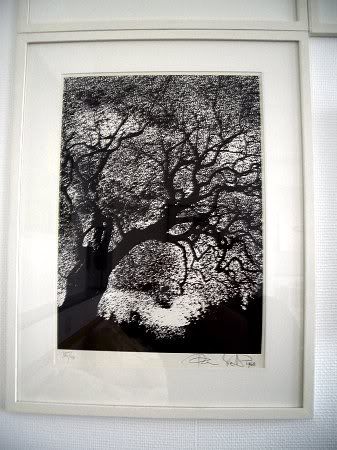
One of the tree pictures by Pan Walther which I liked best among all the art in our hotel room.
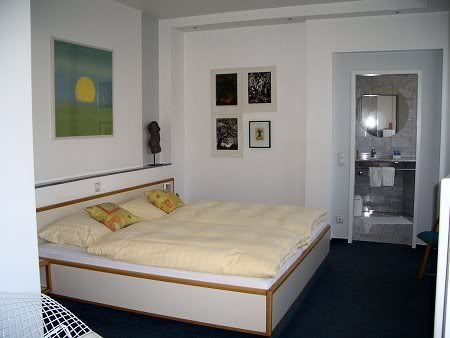
We slept two nights under this massive Warhol sunset. On the wall beside the bathroom door, the three Pan Walther trees, and a little Beuys. A month later, I am still amazed by that place. Hotel Central in Münster, if anybody ever thinks of going to that city.
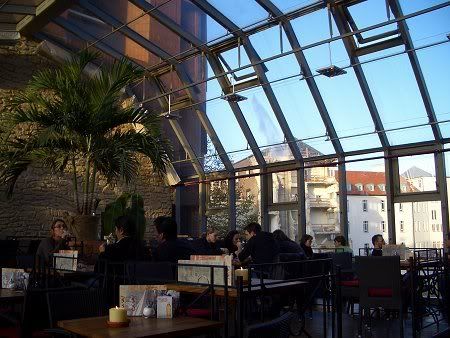
A café in a glass overpass, with a nice view on the municipal museum if it were at home, which it is not, as it's currently being re-built.
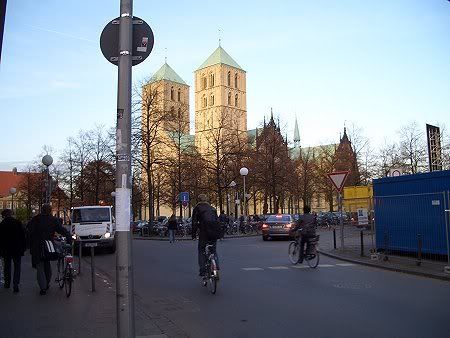
The Romanesque cathedral, rebuilt after World War II as it used to be, with one important difference, which I will mention later.

View over the catherdral square towards St. Lambert's church, where the anabaptist cages are still haging on the spire.

The anthropomorphic personifications of Time and Death, from the huge universal clock in the catherdral which was in storage during the war, so there it is again, in the original, where it always used to be.
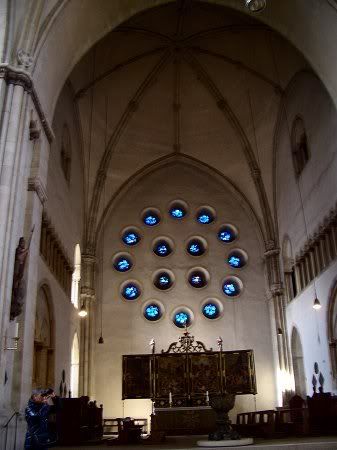
The one thing that changed. Bishop von Galen, famous for resisting the Nazis from his official position in the 1930s, had always complained about the great gates opposite the altar opening and closing during the servie and distracting people from the liturgy they were doing. So, as the cathedral had to be rebuilt anyway, they put this stained glass rosette in its place, now known among Münsterans as 'God's telephone dial'. The bishop was already dead when the church was reopened, but his successors reaped the benefits.
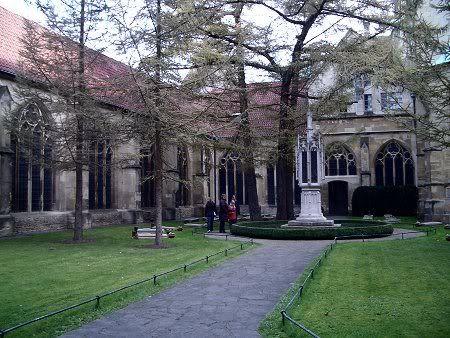
The cloisters of the cathedral. I like cloisters.
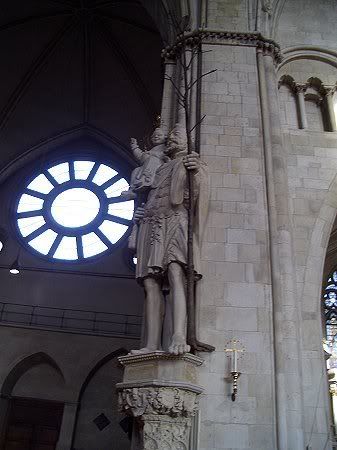
The massive St. Christopher in the cathedral, with an actual tree as his staff. This is one of the things that was left over from the cathedral after the firebombing; there are pictures of him standing, still big and strong and undamaged, among the ruins.

That night, we went back to hear a harp concert, mixing baroque and contemporary. One of the contemporary pieces was so meditative I fell asleep and only woke for the next piece of baroque cheer.

The Principal Market, under the big shadow of St. Lambert's. Note all the bikes. Münster is reputed to be the biking capital of Germany, just as Cambridge is in England.
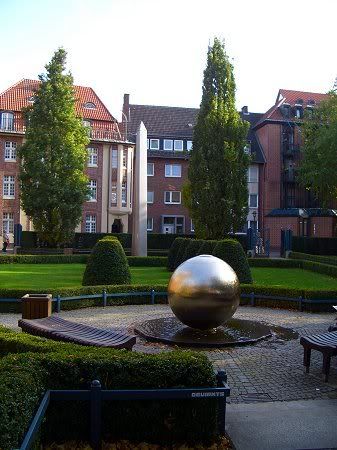
Neo-neo baroque gardens near a rococo church a bit further down Salzstrasse, which was closed -- the church, not the garden.
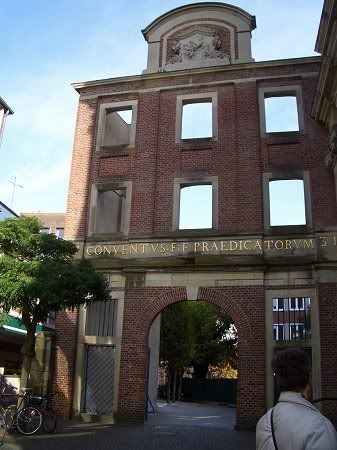
Former Dominican monastery; the gate is still there, but the rest was apparently no longer needed.
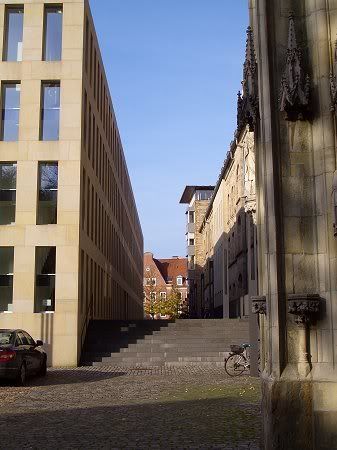
The new and the old abut in perfect harmony in Münster, due to the materials: sandstone for the sacred, red brick for the profane.
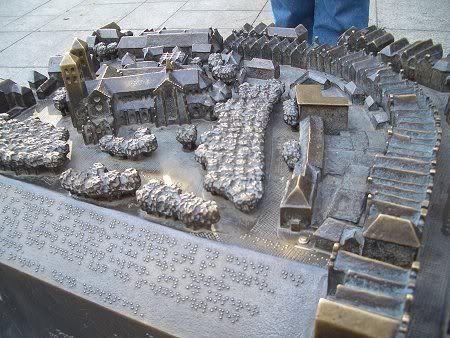
Another one of those bronze braille maps, this one showing the cathedral square.
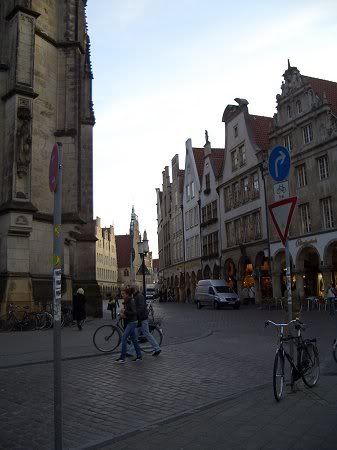
Principal Market, other direction

Town Hall, where the 30 years war ended.
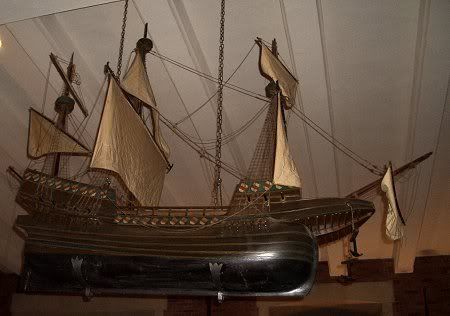
Münster used to be a member of the Hanse -- of course; hence the model ship in the Town Hall.
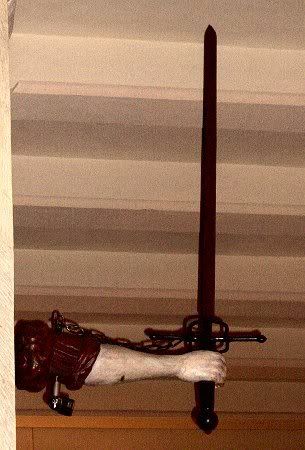
Sendschwert. When the great fair is on, the sword is hung up outside the Town Hall. It opened the day we left, at two in the afternoon -- pity. There are some specialities you get only at Send, but we thought we'd better make good time to Kalkriese.
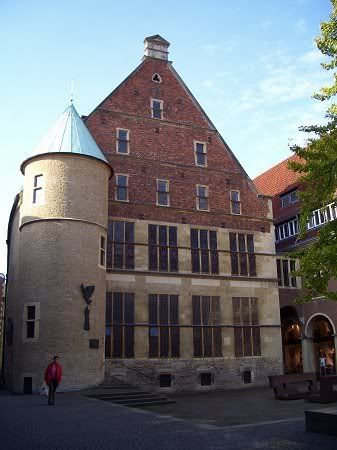
The rear of the Town Hall, looking very massive. It is not so much -- my mother remembers the big event when it was reopened, after the destructions of World War II.
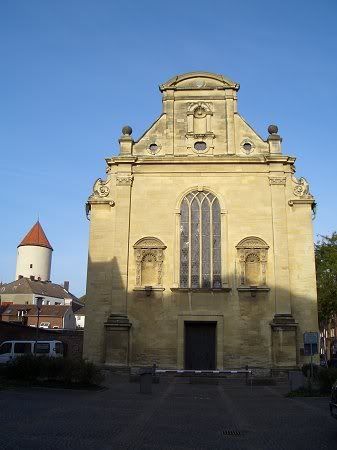
Catholic university church, with one of the old towers from the former city fortifications in the background. In the early 19th century, the city walls were taken down and replaced with a strip of public park all around the old town.
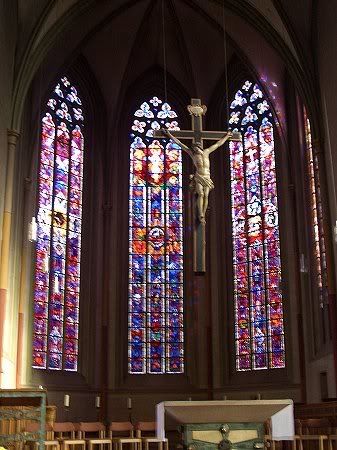
New stained glass windows in an old church. Even when the building remained standing, the glass never made it.
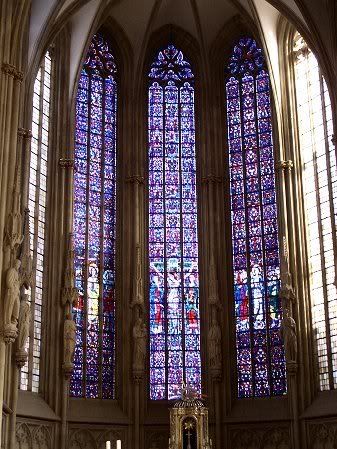
More of the above, different church.
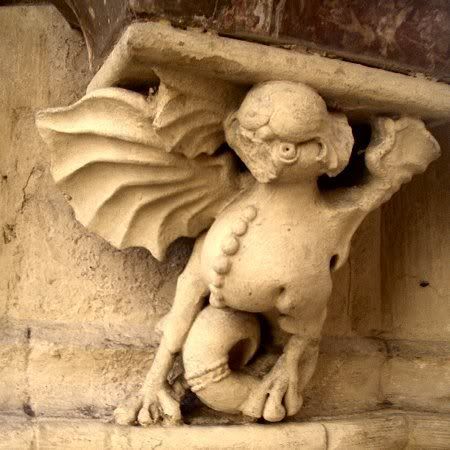
Cute little monster in St. Servatius' church.
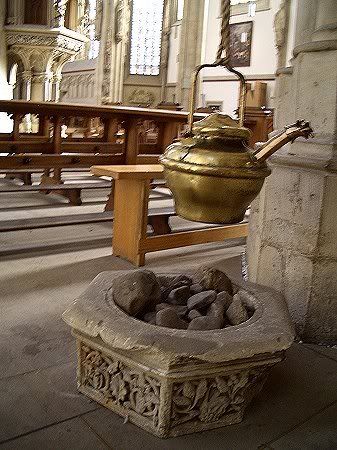
A brass kettle over a fire of stones in an old column capital -- I have no idea what it is about, but I liked it. That was in St. Servatius as well. In that church, they have some tradition of always somebody being there to pray since the days of Bishop von Galen; it is a Catholic thing I don't really understand, but the collected weight of so much human belief is almost tangible there.
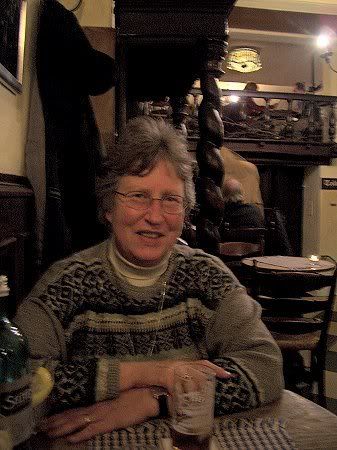
Then, we were knackered and went to dinner in some ancient place near the Town Hall. Here is my mother with her Altbierbowle, which is brown ale with pieces of fruit steeped in it. This one was peach. It sounds weird, like almost all culinary specialities from Münster, but is actually delightful. Münster carries on with that tradition in the phenomenal goat cheese cake we had at the Picasso museum café on recommendation from both the Nazgul (whose mother lives in Münster as well) and the woman at the art hotel.-